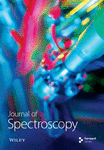High-sensitivity determination of 2-chlorovinylarsonous acid in biomedical samples for retrospective detection of exposure to lewisite upon antidotal therapy
Abstract
A procedure for determination of the lewisite metabolite 2-chlorovinylarsonous acid (CVAA) in biomedical samples, involving derivatization of the latter with propane-1,3-dithiol and head-space solid-phase microextraction of the derivative on a 100-μm PDMS fiber followed by GC-MS, was applied for the first time to analysis of in vivo samples. The detection limits of CVAA in urine, plasma and red blood cells were 0.1, 1.0 and 10 ng/ml, respectively. Upon exposure to lewisite at a dose of 1.6 mg/kg, CVAA could be detected in rat urine for about three months. Study of the effect of a single injection of the antidote unithiol on the CVAA excretion profile revealed more active CVAA excretion during the first two days after the injection, compared to that observed in the absence of antidotal therapy.




